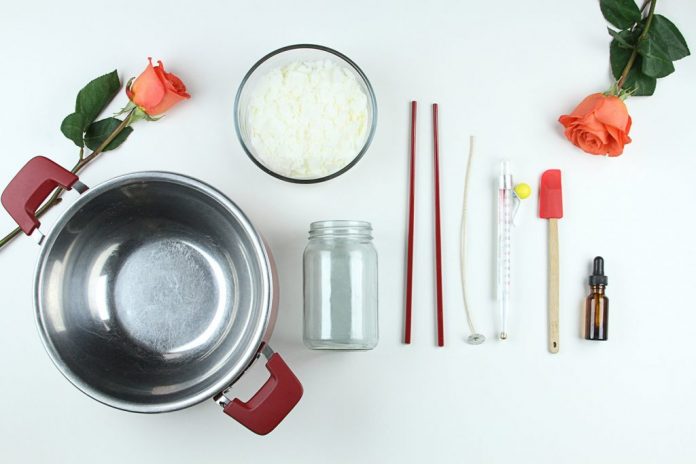Let’s find out how to make DIY candles with our practical guide. The pleasure of bringing a unique atmosphere into your home, combined with the satisfaction of having created homemade candles
DIY candles: here’s what you need
Making candles at home is a pleasant hobby but certainly not suitable for children because the wax is hot and you could burn yourself. So Leo, let save the fun to the grown-ups. Having made this necessary premise, let’s explore the art of candle makers.
The first thing to do, of course, is to get the necessary material:
pots and pans (take the old ones you might want to throw away; even if they get damaged, it doesn’t matter); then it is necessary to decide what type of wax we want to use. There are various types: paraffin, stearin, beeswax, or even a mixture of the same.
The WIC, possibly the dyes, and above all the essences for that touch of perfume that doesn’t hurt: among the aroanando pe, our home candle, lavender, rose a, and oranges the ones that are the most popular.
A fundamental andect: the choice of wax
The choice of wax is essential, not only because it affects the yield of the candle but also for probable harmful effects on health.
According to a study conducted by R. Massoudi and Amid Hamidi, researchers at South Carolina State University, candles made with beeswax or soy wax are more expensive but certainly healthier than the paraffin sisters because while maintaining heat, perfume and fragrance do not release harmful substances into the air.
ThParaffins, a mixture extracted from oil also used in cosmetics. There is a food version, hypothetically of natural origin, called vegetable stearin. It is sold in opaque white flakes or blocks, while the paraffin is transparent in color. Usually, stearin mixes with paraffin to give a more complex texture to the candle.
There are various wax mixtures: those who use 90% paraffin and the rest of stearin; make them entirely of beeswax or paraffin or stearin.
L ‘ experience will teach us the right mix for our precious candles.
It is widely believed that beeswax is the most suitable ingredient because it is natural and gives that light touch of amber color to our handcrafted lighting tools.
Remember that the wax leftover from old candles can very well be reused: the wick is eliminated, and… voilà we have also saved.
DIY candles: the procedure
Now comes the most complicated part: Heat pump dryer the wax has to melt. How do you do? Dissolution takes place in a water bath and slowly.
- Take a larger pot and put it on the fire, half filled with water.
- Put the paraffin and stearin (as a first attempt, we do 90% and 10%, respectively, as we said) and let it melt.
- Making candles is a slow process. Haste and anxiety could burn them, melt over low heat.
When the wax melt, we can add our color; even a few small wax crayons in the liquid make it good in terms of color.
Bear in mind that cold wax is less intense than melted wax; before proceeding with the procedure, try to pour a few drops of wax on a saucer and see what nuance it takes on once solidified. In this phase, we add our favorite scented essence; that is, a few drops; otherwise, the candle’s scent becomes excessive and annoying.
With the melted wax, the game is almost over. “Almost concluded” because this operation is not easy either.
You have to create real candles. Place the wick in the molds well and pour the wax mixture into it: to favor solidification, it is advisable to keep the molds immersed in cold water for a few moments.
Once the candle removes from its mold, How to make an omelet let’s try it. If lit, the perfume is delicate, the atmosphere is relaxing, and you feel beautifully flower children. You are an excellent candle maker.
Congratulations. Otherwise, try again. The first test never comes out well.
DIY candles without wax
A homemade variant of candles is that of wax-free candles.
The process is straightforward, and you will only need the following materials.
- A wick and a hook or any support that holds it in place;
- A container (can be a cup such as a glass or a can);
- kitchen oil;
- to create some scenic effect, get some decorations: for example some pebbles or shells on the bottom will make an impression.

